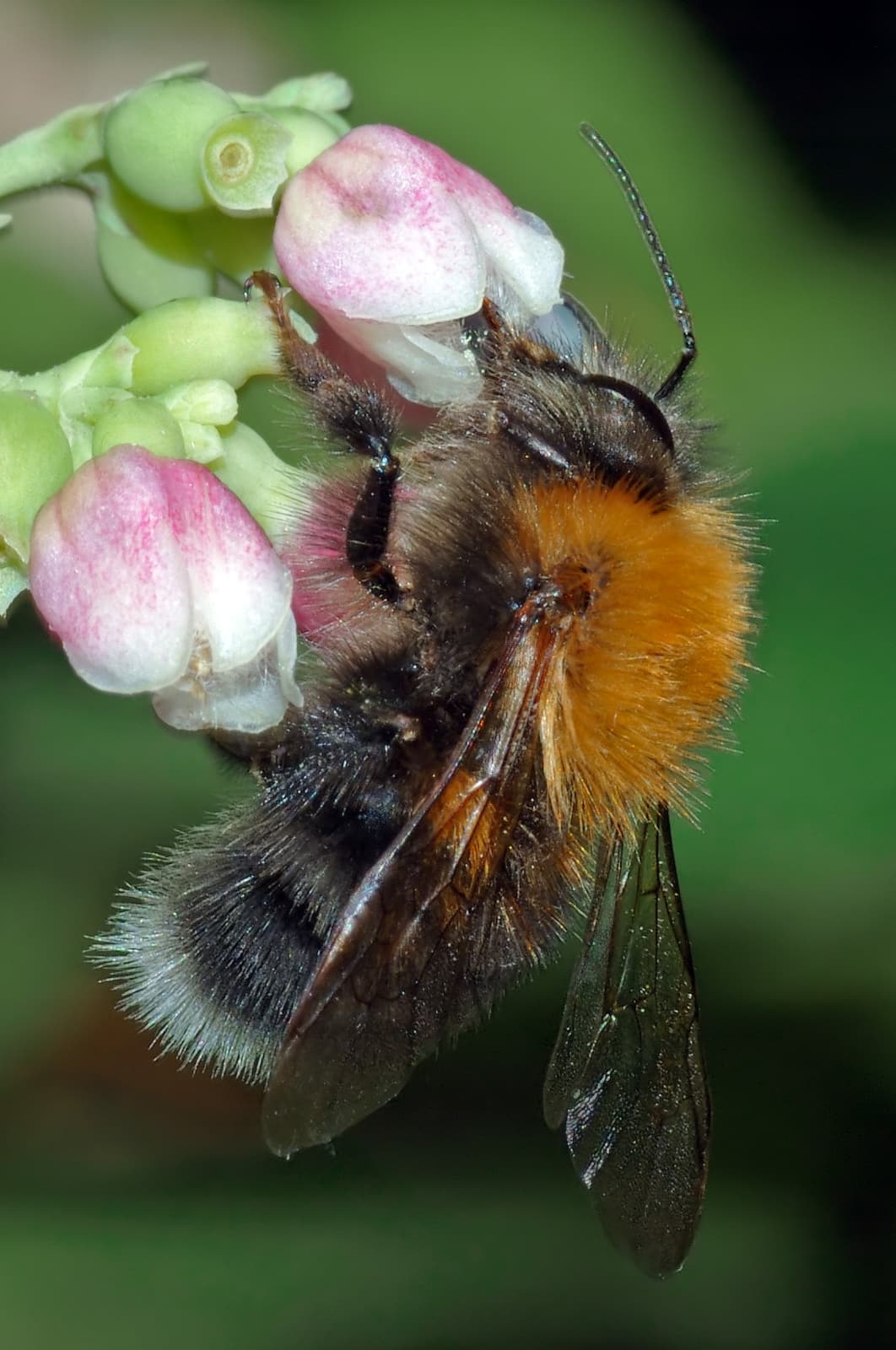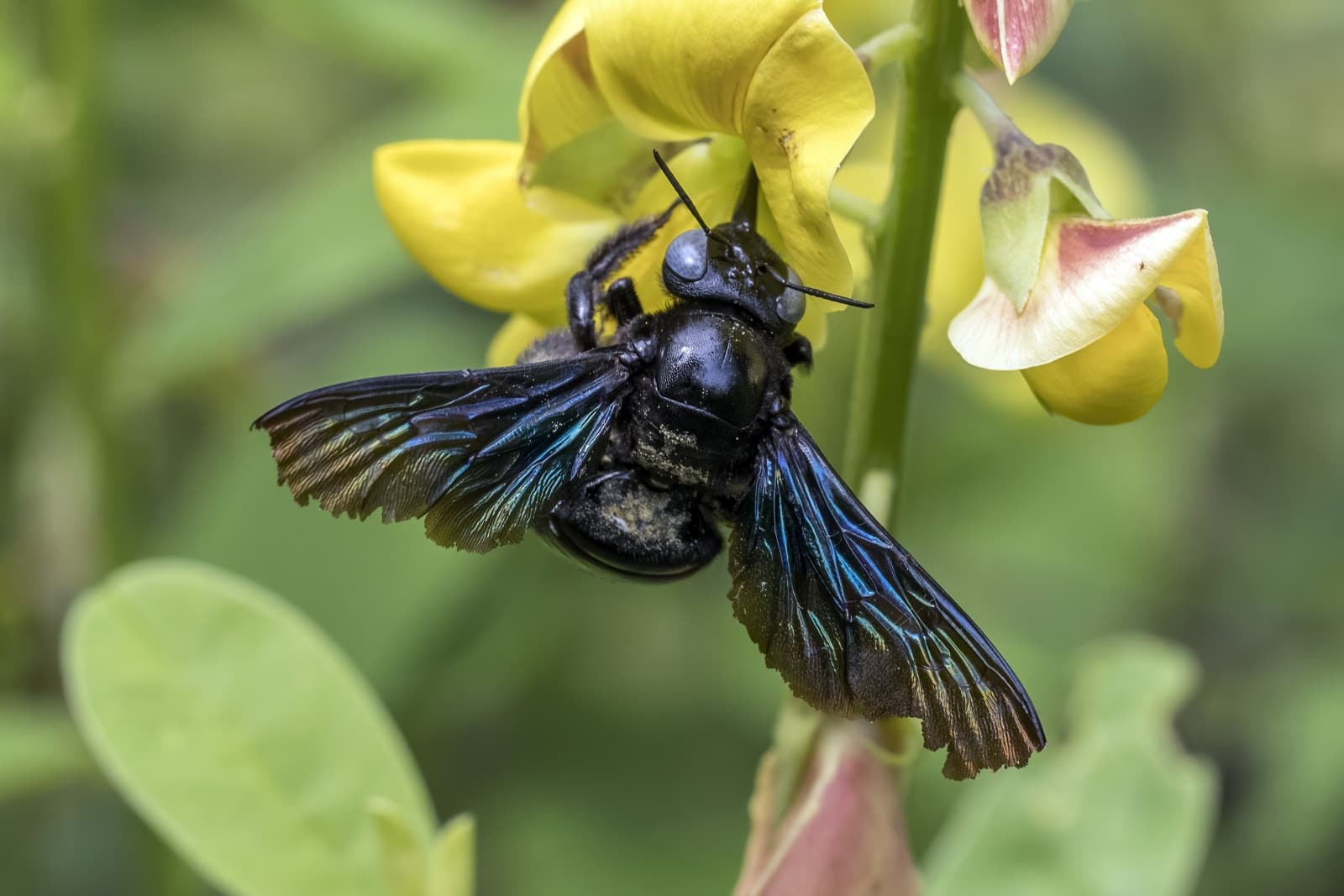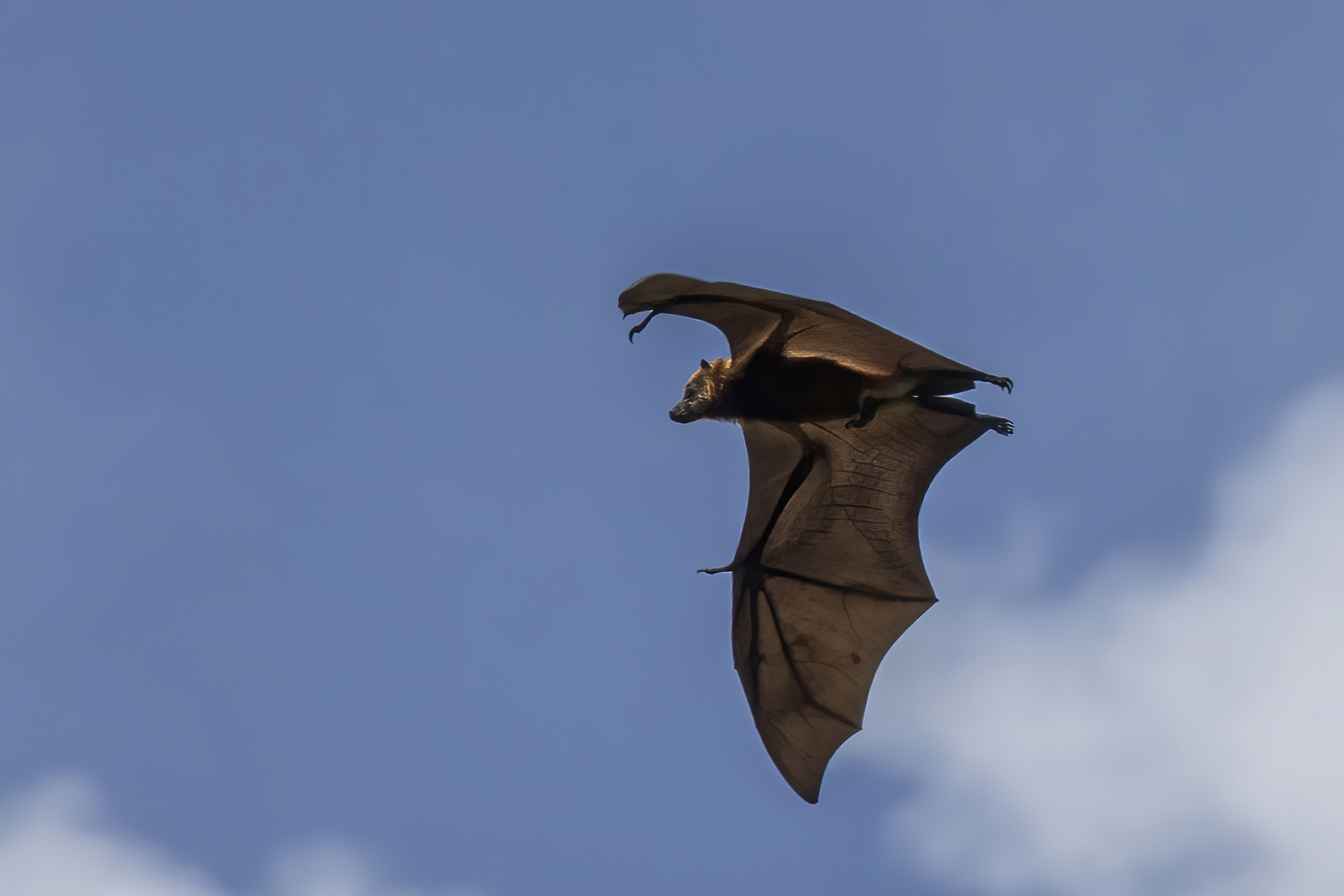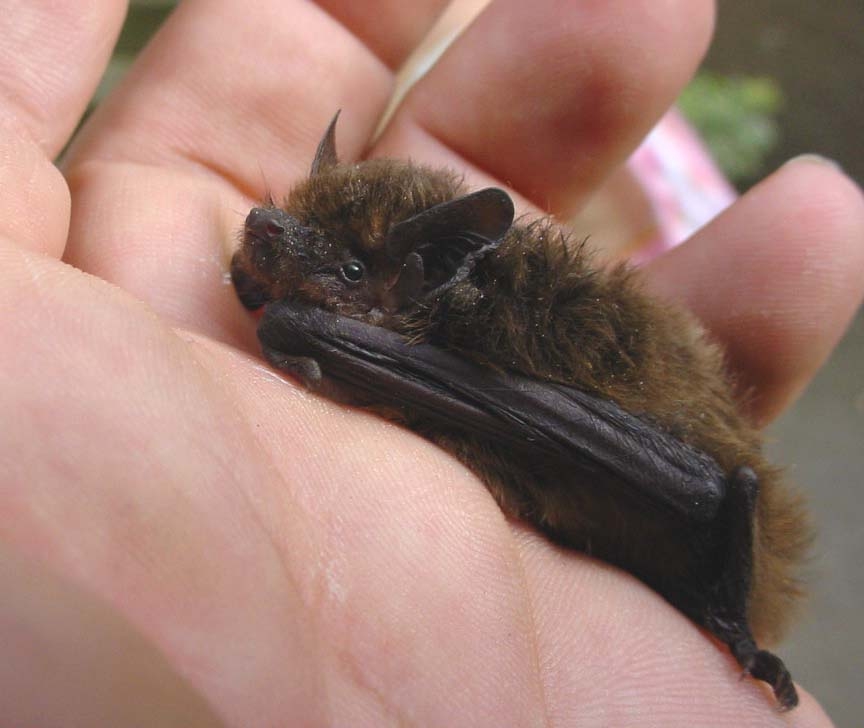Bumble Bee vs Carpenter Bee: A Complete Comparison
While Bumble Bees and Carpenter Bees might appear similar at first glance, these remarkable insects possess distinct characteristics that set them apart. The most notable difference between Bumble Bees and Carpenter Bees lies in their appearance: Bumble Bees have fuzzy abdomens covered entirely in dense hair, while Carpenter Bees display a smooth, shiny abdomen that gleams in sunlight.
As a wildlife journalist who has spent decades documenting these fascinating creatures, I’ve observed that size also helps distinguish these two species. Carpenter Bees typically measure 0.75-1 inch (19-25mm) in length, while Bumble Bees are slightly smaller, ranging from 0.5-1 inch (12-25mm). Understanding these differences is crucial for gardeners, homeowners, and nature enthusiasts alike.

© André Karwath aka Aka / CC BY-SA 2.5
The Bumble Bee’s characteristic fuzzy appearance serves a vital purpose in pollination, allowing pollen to easily attach to their dense hair covering. This image captures the distinctive full-body fur that makes Bumble Bees such efficient pollinators.

© Charles J. Sharp / CC BY-SA 4.0
In contrast to the Bumble Bee, this Carpenter Bee exhibits the characteristic glossy, hairless abdomen that makes identification straightforward. Note the metallic shine and robust body structure typical of these wood-nesting bees.
Key Differences: Bumble Bee vs Carpenter Bee
| Feature | Bumble Bee | Carpenter Bee |
|---|---|---|
| Abdomen Appearance | Fuzzy, hair-covered | Smooth, shiny, hairless |
| Nesting Behavior | Underground colonies | Solitary, nests in wood |
| Size | 0.5-1 inch (12-25mm) | 0.75-1 inch (19-25mm) |
| Social Structure | Highly social, colony-based | Mostly solitary |
| Body Shape | Round, robust | More elongated |
| Pollination Style | Buzz pollination | Nectar robbing common |
Habitat and Nesting Behavior
Bumble Bees and Carpenter Bees exhibit markedly different nesting preferences. Bumble Bees establish colonies underground, often in abandoned rodent burrows or natural cavities, housing anywhere from 50 to 500 individuals. Their colonies include a queen, workers, and seasonal males.
Carpenter Bees, true to their name, construct nests by excavating tunnels in wood, creating perfectly round entrance holes measuring 0.5 inches (12mm) in diameter. These solitary bees prefer weathered, unpainted wood and can become problematic for wooden structures when populations grow large.
Pollination and Ecological Role
Both species play crucial roles in ecosystem health, but their pollination techniques differ significantly. Bumble Bees are master pollinators, using buzz pollination (sonication) to release pollen from flowers. This technique makes them particularly valuable for crops like tomatoes, peppers, and blueberries.
Carpenter Bees, while still important pollinators, sometimes engage in “nectar robbing” by cutting holes in the base of flowers to access nectar without pollinating. However, they remain essential pollinators for many open-faced flowers and native plants.
Behavior and Interaction with Humans
Despite their intimidating size, both species are generally non-aggressive. Female Carpenter Bees can sting but rarely do unless directly handled. Male Carpenter Bees, often seen hovering territorially near nests, cannot sting at all. Bumble Bees will typically only sting when their colony is threatened.
Conservation Status and Threats
Both bee species face similar challenges in our changing environment. Habitat loss, pesticide use, and climate change pose significant threats to their populations. Carpenter Bees are particularly vulnerable to the removal of dead wood and the use of treated lumber in construction, while Bumble Bees suffer from the loss of wildflower meadows and natural nesting sites.
Who Would Win in a Confrontation?
While neither species is naturally aggressive toward the other, Carpenter Bees generally demonstrate more territorial behavior. Their larger size and robust mandibles, evolved for wood-boring, give them a physical advantage. However, Bumble Bees’ colonial nature means they can mount a coordinated defense when threatened. In nature, these bees typically avoid conflict, focusing instead on their distinct ecological niches.
Understanding the differences between Bumble Bees and Carpenter Bees helps us appreciate their unique roles in our ecosystems and guides us in creating environments where both species can thrive. Whether you’re a gardener, homeowner, or nature enthusiast, recognizing these distinctive pollinators enriches our connection to the natural world.









